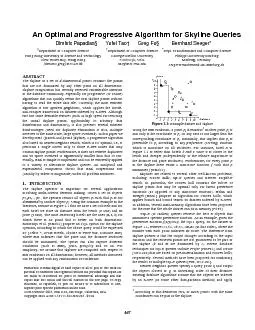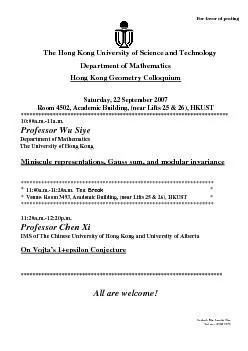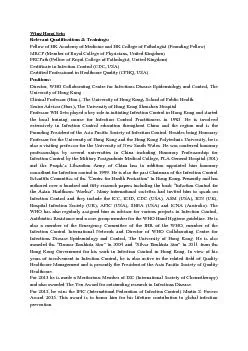PDF-Department of Computer Science Hong Kong University of Science and Tec
Author : alexa-scheidler | Published Date : 2015-10-23
467 467 PhilippsUniversity Marburg Marburg Germany seegermathematikunimarburgde The skyline of a set of dimensional points contains the points that are not dominated
Presentation Embed Code
Download Presentation
Download Presentation The PPT/PDF document "Department of Computer Science Hong Kong..." is the property of its rightful owner. Permission is granted to download and print the materials on this website for personal, non-commercial use only, and to display it on your personal computer provided you do not modify the materials and that you retain all copyright notices contained in the materials. By downloading content from our website, you accept the terms of this agreement.
Department of Computer Science Hong Kong University of Science and Tec: Transcript
Download Rules Of Document
"Department of Computer Science Hong Kong University of Science and Tec"The content belongs to its owner. You may download and print it for personal use, without modification, and keep all copyright notices. By downloading, you agree to these terms.
Related Documents














